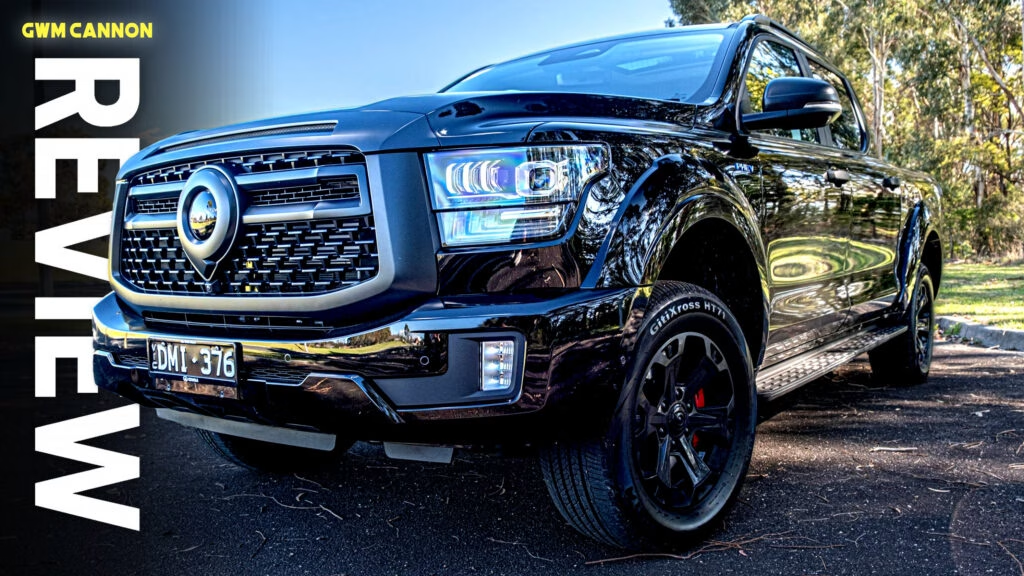What Makes the GWM Cannon Alpha PHEV Ultra Stand Out in the Hybrid Pickup Crowd?
Hybrid pickups are having a moment, especially in markets where full electrics haven’t quite caught on with traditional truck buyers. The GWM Cannon Alpha PHEV Ultra is a prime example of how plug-in hybrids are stepping up to fill that gap. With a bold design, serious power, and a plush interior, it’s not just another workhorse—it’s aiming to be a game-changer in its segment.
How Does the Cannon Alpha PHEV Stack Up on Power and Performance?
Let’s get straight to the numbers. Under the hood, the Cannon Alpha PHEV Ultra combines a 2.0-liter turbocharged four-cylinder engine with a single electric motor. The result? A combined output of 402 horsepower and a whopping 553 lb-ft of torque. That’s more muscle than the Ford Ranger PHEV (277 hp/514 lb-ft) and even edges out the BYD Shark 6 on torque, though the Shark wins on peak horsepower.
Zero to 62 mph comes up in a brisk 7 seconds, which is genuinely impressive for a truck tipping the scales at over 6,100 pounds. The 37.1 kWh battery pack is one of the largest in the class, offering up to 115 kW of all-electric driving. Real-world? You’ll get a decent chunk of your daily commute done without burning a drop of fuel, especially if you plug in overnight.
But it’s not all roses. The powertrain can feel laggy at times, and there’s a frustrating rev hang—lift off the throttle, and the truck still wants to surge forward for a second or two. GWM has issued a fix for this, but it’s something to check on if you’re test-driving. The transition between electric and gas power isn’t always seamless either, which can be a minor annoyance in stop-and-go traffic.
Is the Interior Really That Upscale for a Pickup?
Short answer: yes. The Cannon Alpha borrows heavily from the Tank 500 SUV, and it shows. The cabin is swathed in soft-touch leather, faux wood trim, and metallic accents. There’s a 12.3-inch infotainment display with wireless Apple CarPlay and Android Auto, a matching digital instrument cluster, and even a head-up display. The analog clock in the dash is a quirky, classy touch—think more luxury sedan than farm truck.
Creature comforts abound: heated, ventilated, and massaging front seats, a heated steering wheel, and a wireless phone charger. Even rear passengers get pampered with heated and ventilated outboard seats and a wireless charger tucked into the armrest. Space is generous, and the overall fit and finish punch well above the Cannon Alpha’s price point.
What About Tech and Usability—Any Annoyances?
The tech suite is robust, but not perfect. The infotainment system is quick and intuitive, but the digital gauge cluster is a letdown—tiny speed and power readouts, no traditional gauges, and no tachometer. It’s a weird omission in an otherwise tech-forward cabin.
There are also some blank buttons on the center console, which feels odd in a flagship trim. And while the chunky gear selector and drive mode buttons are satisfying to use, the presence of unused controls hints at cost-cutting or future features that didn’t make the cut.
How Does It Drive Day-to-Day and Off-Road?
On the road, the Cannon Alpha PHEV Ultra is a pleasant surprise. The ride is smooth and quiet, a far cry from the bouncy, unrefined pickups of old. The plug-in hybrid system delivers plenty of punch when you need it, and there’s even a launch control mode—because why not?
Fuel economy is a mixed bag. GWM claims 1.7 l/100 km (about 138 mpg US) on the combined cycle, but that’s only when the battery is fully charged and you’re mostly running electric. In real-world mixed driving, expect more like 11.5 l/100 km (21 mpg US). Not groundbreaking, but respectable given the size and power.
Off-road, the Cannon Alpha holds its own. The four-wheel-drive system, low-range transfer case, and front/rear locking differentials make it more than capable on rocky or slippery trails. Payload and towing are solid, too—685 kg and 3,500 kg, respectively.
Are There Any Practical Drawbacks?
Let’s talk about the elephant (or rather, the spare tire) in the room. Because the battery takes up space under the bed, GWM mounts the spare vertically in the bed itself, covered with a cheap-looking plastic shroud. Not only is it an eyesore, but it rattles over bumps—enough to make you want to toss it out on the highway. It’s a clumsy solution that undermines the truck’s otherwise thoughtful design.
Safety tech is comprehensive but can be intrusive, with systems that sometimes overreact or nag the driver. It’s a common gripe in modern vehicles, but worth noting if you prefer a less “helpful” co-pilot.
How Does Pricing Compare to Rivals?
Value is one of the Cannon Alpha’s strongest suits. In Australia, it starts at AU$59,990 and tops out at AU$66,990 for the Ultra trim. That’s less than the Ford Ranger PHEV (from AU$71,990) and only a hair above the BYD Shark 6. For what you get—luxury features, serious power, and a big battery—it’s a compelling deal.
Plus, GWM backs it with a seven-year, unlimited-kilometer warranty, which should ease concerns about hybrid system complexity or long-term reliability.
Who Should Consider the Cannon Alpha PHEV Ultra?
If you want a pickup that blends real electric range, strong performance, and a surprisingly plush cabin, the Cannon Alpha PHEV Ultra deserves a spot on your shortlist. It’s not perfect—the powertrain could be smoother, and that spare tire setup is borderline comical—but it’s proof that plug-in hybrids can be more than just a stopgap on the way to full electrification.
The big takeaway? The GWM Cannon Alpha PHEV Ultra isn’t about perfection—it’s about smarter adjustments. Start with one change this week, and you’ll likely spot the difference by month’s end.

